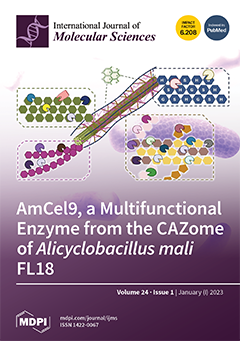The water flea
Daphnia O.F. Müller 1776 (Crustacea: Cladocera) is an important model of recent evolutionary biology. Here, we report a complete genome of
Daphnia (Ctenodaphnia) arabica (Crustacea: Cladocera), recently described species endemic to deserts of the United Arab Emirates. In this study,
[...] Read more.
The water flea
Daphnia O.F. Müller 1776 (Crustacea: Cladocera) is an important model of recent evolutionary biology. Here, we report a complete genome of
Daphnia (Ctenodaphnia) arabica (Crustacea: Cladocera), recently described species endemic to deserts of the United Arab Emirates. In this study, genome analysis of
D. arabica was carried out to investigate its genomic differences, complexity as well as its historical origins within the subgenus
Daphnia (
Ctenodaphnia). Hybrid genome assembly of
D. arabica resulted in ~116 Mb of the assembled genome, with an N50 of ~1.13 Mb (BUSCO score of 99.2%). From the assembled genome, in total protein coding, 5374 tRNA and 643 rRNA genes were annotated. We found that the
D. arabica complete genome differed from those of other
Daphnia species deposited in the NCBI database but was close to that of
D. cf.
similoides. However, its divergence time estimate sets
D. arabica in the Mesozoic, and our demographic analysis showed a great reduction in its genetic diversity compared to other
Daphnia species. Interestingly, the population expansion in its diversity occurred during the megadrought climate around 100 Ka ago, reflecting the adaptive feature of the species to arid and drought-affected environments. Moreover, the PFAM comparative analysis highlights the presence of the important domain SOSS complex subunit C in
D. arabica, which is missing in all other studied species of
Daphnia. This complex consists of a few subunits (A, B, C) working together to maintain the genome stability (i.e., promoting the reparation of DNA under stress). We propose that this domain could play a role in maintaining the fitness and survival of this species in the desert environment. The present study will pave the way for future research to identify the genes that were gained or lost in this species and identify which of these were key factors to its adaptation to the harsh desert environment.
Full article






